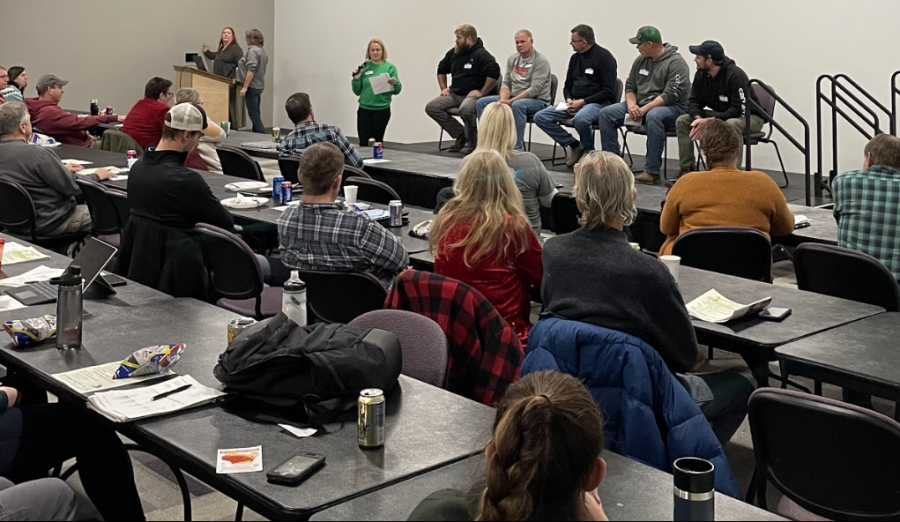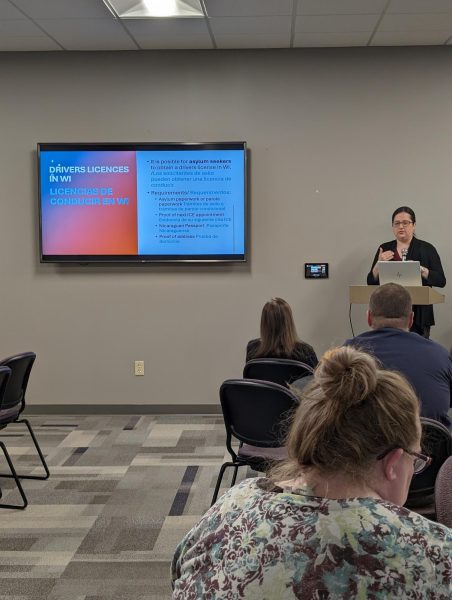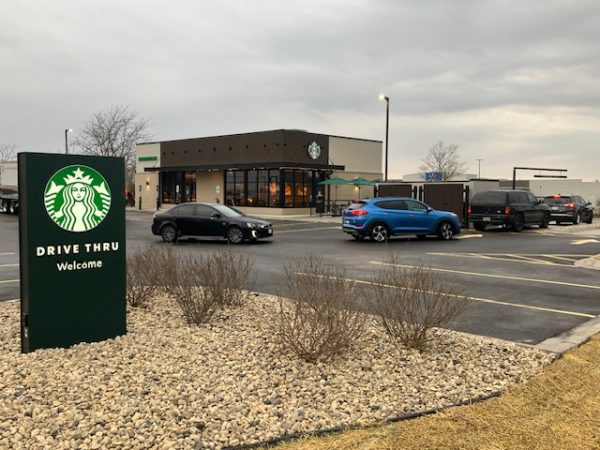The push for healthier soil
Workshop attendees listen to speakers on the Farmer Panel Discussion.
December 4, 2022
In the spirit of World Soil Day, an international holiday which advocates for healthy soil and its sustainable management, the non-profit organization Glacierland Resource Conservation & Development (RC&D) held the first annual Winter Soil Health Workshop Thursday, Dec. 1 at the UW-Whitewater Community Engagement Center.
“The purpose of the workshop is to promote soil health and agriculture,” said organizer Kirsten Jurcek. “We aim to educate and create awareness about contemporary practices.”
The event sought to encourage sustainable and environmentally friendly agricultural practices by promoting a variety of underutilized soil-care techniques – one in particular being cover cropping.
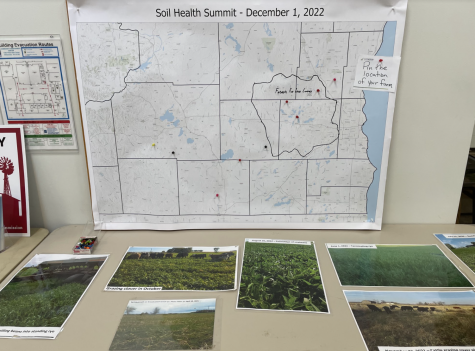
(John Leahey)
Weeds spell disaster for farmers. The unwanted growth competes with conventional crops for valuable resources like water, nutrients, and sunlight. This interferes with, and sometimes completely disrupts, crop production.
To mitigate weeds, a majority of farmers utilize tillage, a practice where farmers disrupt and dig out the top inches of soil in order to remove weeds and flatten the land for seed planting. Another common solution is the use of synthetic herbicides which kill any undesired vegetation.
These methods, however, can have negative effects in the long term. By removing the root structures and stability of soil, tilling can cause increased erosion, sediment and manure runoff, decreased forage yield, and can even increase carbon emission released into the atmosphere. Farmers who use herbicides may also run the risk of contaminating soil and plants, and with the increased runoff caused by tillage-induced erosion, herbicides can contaminate bodies of water as well.
Despite these potentially harmful practices, there are solutions. One way to get around tilling and herbicide applications is cover cropping. This method of soil preservation involves sowing a plant not meant for harvesting which will cover the soil in the off-season.
“I would call cover cropping a lost art,” said local farm owner Cody Brueggen. “After synthetic fertilizers after World War II, agriculture really became dependent on artificially produced fertilizers because it was cheap–prior to that, cover crops were used regularly. It’s just been forgotten about for 70 years.”
Bruggen owns Little Red Farms, located just 10 minutes west of Whitewater, which he started in 2016. In fact, Little Red Farms supplies the meat for Second Salem Brewing Company’s aptly named Little Red Farms Burger. In exchange, the restaurant’s owner, Christ Christon, donates leftover grain from the brewing process to the farm for pig feed.
“The nitrogen in many fertilizers used to be part of making bombs,” Brueggen explained. “After the war, they needed a way to get rid of the excess, so they made it into fertilizer for farming. Since then we’ve become very dependent on those artificial chemicals.”
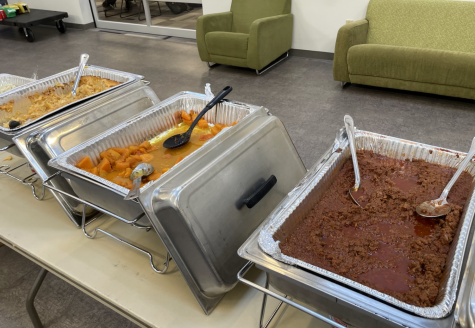
(John Leahey)
The process of cover cropping eliminates the need for these chemicals. Usually planted in late summer or early fall, cover crops can carry natural deterrents to weeds which can help prevent them from growing or spreading.
“Cereal rye, a common cover crop, has an allelopathic effect where that crop can actually release a natural compound toxin into the soil that inhibits common weed seeds from germinating,” said Willie Hughes, another local farmer. “Essentially, if you crowd the dance floor with the good dancers, the bad dancers can’t come in.”
Hughes works on W. Hughes Farms General Partnership, which has been in operation since 1844. Hughes is also the president of Farmers on the Rock, a non-profit organization which also promotes environmentally sustainable agricultural practices.
“We have a better understanding of what’s effective,” said Hughes, “and the writing’s on the wall that what we’ve been doing isn’t going to work forever.”
In addition to weed mitigation, cover cropping can increase crop yields by retaining soil nutrients over the winter months that cash crops can then utilize in the spring. Also, cover crops can absorb rainwater, retaining soil moisture and preventing erosion and runoff, as well as offer habitats for pollinators. By covering the soil, cover crops can even sequester carbon, decreasing the atmospheric emissions responsible for climate change.
“Climate change is pushing all of this to the forefront,” Hughes said. “Through that lens, a lot of these practices that maybe historically seemed silly or pointless are now showing that they have some real merit behind them.”
Cover cropping was one of many sustainable farming practices touched on in the workshop, and many of the farmers there seemed to receive the lectures well. As World Soil Day comes and goes, organizers were left with a good impression that the guests of this event will continue to spread the practice of eco-friendly farming techniques.
“Unfortunately farmers can sometimes be stubborn,” Brueggen said. “As society puts more pressure on everyone to be more environmentally friendly, this is one way that farmers can help: learning different practices and trying to adapt.”

